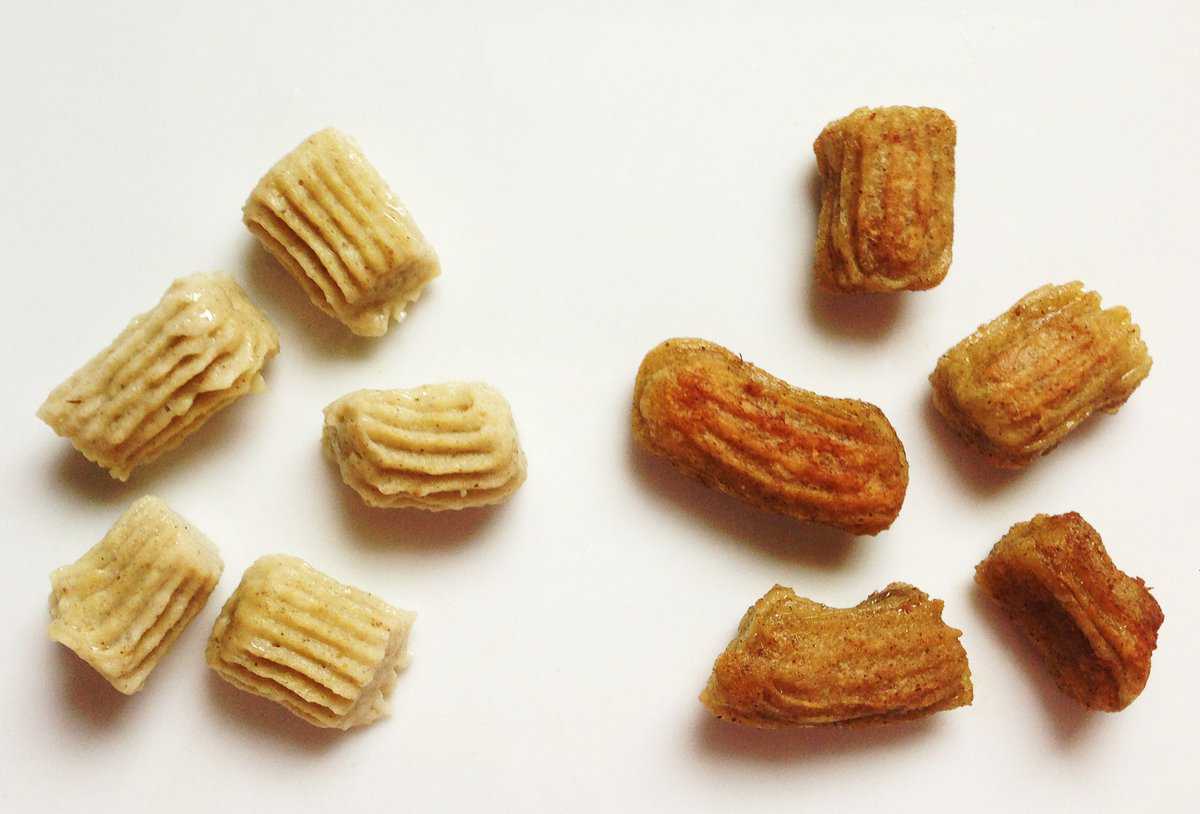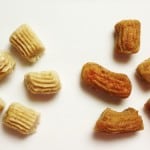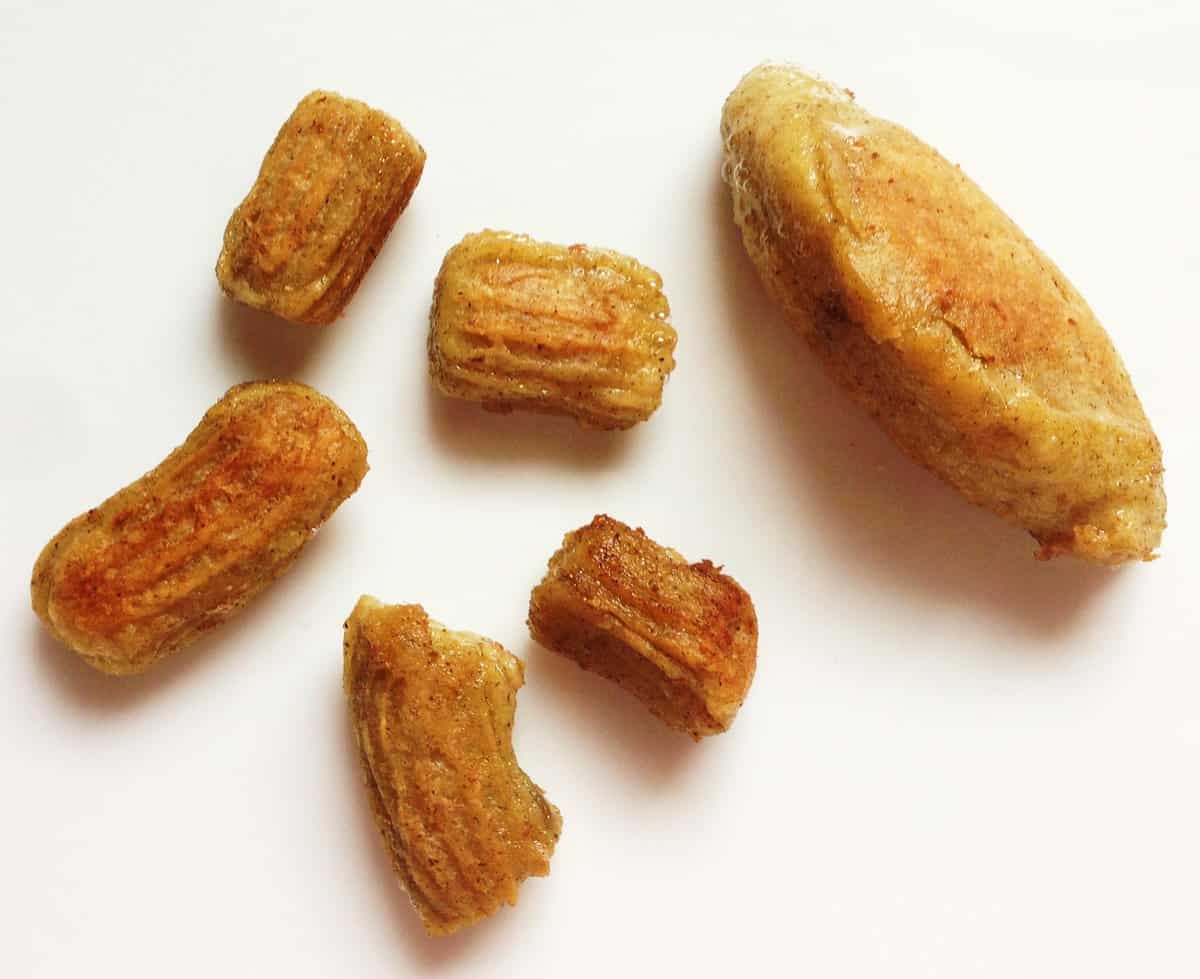These gluten free Parisienne style gnocchi made from a pate a choux (eclair dough) of wild rice flour are a great example of of how to use wild rice flour, as well as making gluten free Parisienne gnocchi.
Wild rice flour is an odd ingredient. As it is not a grain, but rather the seed of a wild grass, it doesn't contain the glutinous stretching properties of bread flour. This means that if you try to make fresh pasta with it (as I tried to do once) the pasta will crumble and break into dry shards.
Recipes like pate aux choux that don't require gluten to keep their shape are a great way to experiment with wild rice flour.
Using a pastry bag with fluted tip
In the pictures, I put the wild rice gnocchi in pastry bag with a fluted tip, which makes for very attractive ridged gnocchi, in the bottom picture, there is a selection of two different shapes you could make with this dough. The ovoid shape, or quenelle, is made by using two spoons, if you make larger dumplings, make sure to double the poaching time.
How to Serve
Parisienne gnocchi are blanched until they float, then drained and sauteed until golden brown and slightly puffed. I usually serve them with a vegetable saute since if they're served with a creamy sauce they'll lose their crisp texture.
Wild Rice Flour Gnocchi Parisienne
Equipment
- 1 Pastry bag
- 1 3 quart sauce pot
Ingredients
- ½ cup wild rice flour
- 2 large eggs
- 1 cup milk or water
- ½ stick of butter
- ¼ teaspoon salt
- 2 tablespoon parmesan cheese grated (optional)
Instructions
- Heat the water in a small pan with the butter and salt.
- When the water boils, add the mixed flours all at once, turn the heat down to low and stir rapidly for about 2 minutes, until the mixture in the pan forms a sticky dough.
- Mix in the grated parmesan let this cool for five minutes and them beat the eggs into the dough one at a time with a wooden spoon until the dough comes together, it will be sticky still.
- Put this mixture into a pastry bag with a ½ inch icing tip. Boil a pot of lightly salted water, and start to squeeze the dough out of the pastry bag into the water, using a scissors to cut the dough that comes out into ½ inch dumplings. Cook the dumplings until they float.
- You will probably have to make two batches. once the gnocchi float, let them cook for 2 minutes longer and then remove to a cookie sheet that has some oil on it, so they don't stick. Repeat with the rest of the dough.
- Cover the cookie sheet with the dumplings once they are cooled, they will keep in the refrigerator for 3-4 days.




Danae
Funny! I was looking for a recipe to use a bag of wild rice flour that I have in my pantry. Happy that your site popped up in my search. Hope all is well.
Alan Bergo
Hi Danae, whatcha gonna do with the wild rice flour? One of my favorite things to do is to cook it 50/50 with polenta, spread it on a board to cool, and then cut rings aka Roman gnocchi, which are great baked with sauces and all sorts of things. Hope you're surviving this deep freeze we are having. 🙂
tereigh
I tried wild rice flour today for banana brownies and they were unexpectedly delicious - like probably the best I ever tasted. Rich, heavy and just all over awesomeness.
Alan Bergo
Good for you Tereigh, Wild rice flour is great, I find that customers can be put off sometimes by it's strong flavor if I don't cut it with things. It's great fun to experiment with, even though it can be very challenging.